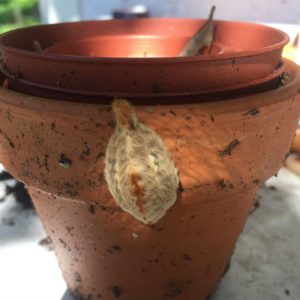This little guy has been all over the news recently and can be found in our yards in Polk County. The puss caterpillar, the larvae of the Megalopyge opercularis (or southern flannel moth) is one of the most well-known venomous caterpillars and can be found throughout the southeastern United States.

While the adults are small moths covered in furry, orange setae, the larvae are the most well-known. They go through multiple instars, and each molt brings forth a more hairy, scary, larvae. In central Florida, the larvae are most commonly found on oak and elm trees, but they can be spotted on over forty-one different genera of plants! Remember that the caterpillar stage of both butterflies and moths are chewers—they will feed on the leaves of their host plants and the damage is usually visible. If your oaks and elms exhibit chewing damage, watch out for the puss caterpillars.
Why are the puss caterpillars so dangerous?
They have venomous spines that can cause burning stings in humans. The toxicity of the venom increases as the size of the larvae increases, so the bigger caterpillars pack a more brutal punch. In addition to the localized sting, other symptoms that could be associated with contact include headache, nausea, vomiting, fever, low blood pressure, seizures and a few other rare symptoms. Get familiar with the symptoms, particularly if you are seeking medical assistance.
So what can you do?
Be cautious when outdoors during the early summer and fall brooding seasons of the southern flannel moth. Also, be aware of what the natural enemies of the puss caterpillar look like—they are the ones working to control the population for us, so we want to make sure that we protect them and allow them to do their job. Natural enemies include four species of the tachinid flies and at least two species of ichneumonid wasps.
If you have any additional questions, reference this UF/IFAS Extension publication or call your local UF/IFAS Extension Master Gardener Volunteer Plant Clinic.
In Polk County, contact us here or call us at (863) 519-1041.
 0
0
